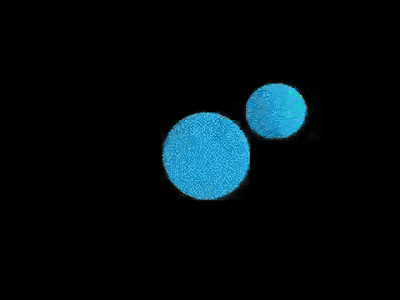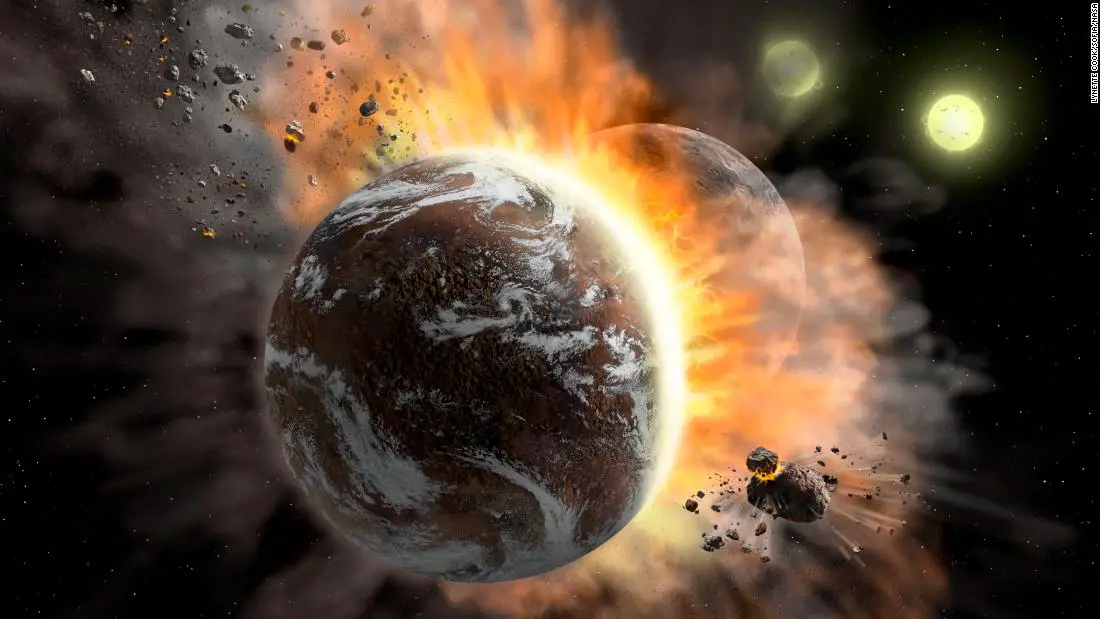Key Takeaways:
- An exoplanet collision near a Sun-like star was accidentally discovered by an amateur astronomer.
- The collision caused the star, now named ASASSN-21qj, to brighten in infrared light.
- Data from LCOGT and NASA’s WISE confirmed the exoplanet collision and its aftermath.
- The collision’s debris formed a cloud that dimmed the star’s light for around 900 days.
- This rare event offers insights into planetary formation and Earth’s own Moon’s origins.
___________
Astronomers tracked a 900-day dimming caused by debris from colliding exoplanets.

Accidental Discovery of an Exoplanet Collision
Astronomers have recorded a surprising cosmic event: the collision of two exoplanets around a distant star named ASASSN-21qj. This significant find was made by chance after an amateur astronomer spotted an unusual light pattern in data posted online by research teams from the University of Bristol and Leiden University. This unexpected detection has become a valuable asset for understanding planetary collisions, debris fields, and the potential for similar events in other solar systems.
The event began when astronomers observed an ordinary-looking star, 2MASS J08152329-3859234, in both optical and infrared light. The star appeared to experience a significant infrared brightening that would later reveal its exceptional nature. Shortly afterward, an unnamed amateur astronomer noticed this brightening in the star’s light curve, prompting an extended two-year study. By sharing data, the research team unintentionally set the stage for the discovery, with support from California’s Las Cumbres Observatory Global Telescope Network (LCOGT) and NASA’s Wide-field Infrared Survey Explorer (WISE).
Analysis and Aftermath
Following an analysis of photometric data, astronomers concluded that two massive exoplanets had collided near ASASSN-21qj, creating an extended hot remnant. Classified as “super-Earths or mini-Neptunes,” these exoplanets were massive enough to generate substantial debris and a bright infrared signature. The collision took place within two to 16 astronomical units (AU) from the star, explaining the intense burst of infrared light that initially resembled a stellar brightening.

However, the collision’s effects didn’t stop there. Astronomers observed a significant dimming in ASASSN-21qj’s light over a 900-day period following the collision, as a large debris cloud formed and passed in front of the star. This sustained dimming suggests that the debris cloud formed by the collision had a lengthy orbit, with some team members estimating it could take roughly 900 days to complete. Ongoing observations aim to assess whether the debris cloud will continue to expand, collide with other materials, or dissipate over time.
Future Implications and Research Potential
The surprise discovery of this exoplanet collision opens up new possibilities for research in planetary formation and the processes that shape solar systems. Understanding the debris left by exoplanet collisions could yield insights into how celestial bodies like Earth’s Moon formed, as it is also believed to be the result of a massive impact. For researchers, ASASSN-21qj serves as a natural laboratory to study planetary dynamics and potential collisions elsewhere in the universe.
Astronomers are now closely observing ASASSN-21qj to gather more information about the collision’s aftermath. If additional debris clouds or interactions are detected, they could provide a better picture of the processes that occur after an exoplanetary collision. This event also underscores the valuable contributions amateur astronomers can make by spotting anomalies, enhancing professional astronomers’ efforts to capture rare cosmic events and deepen our understanding of planetary evolution.




